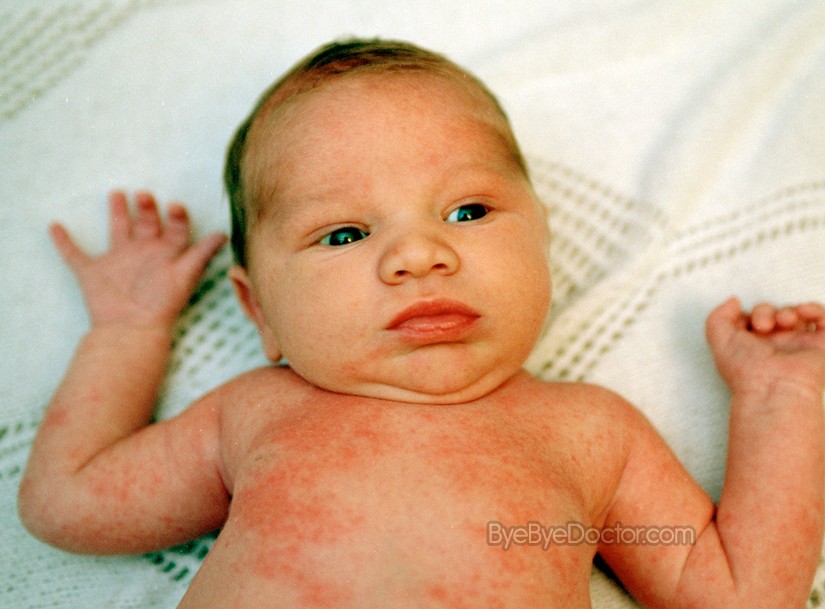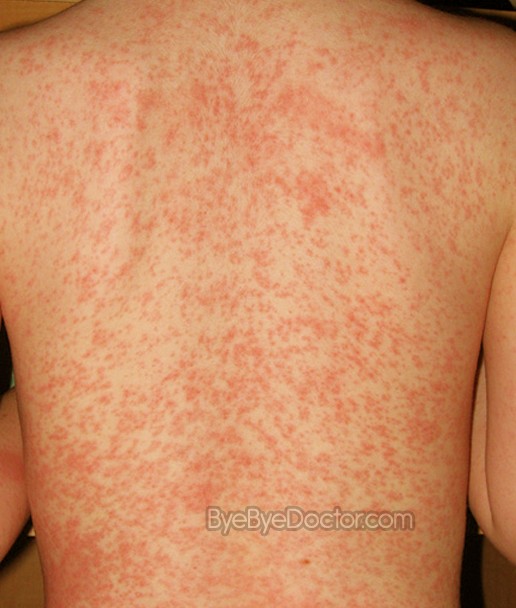Heat Rash
Last reviewed by Dr.Mary on August 7th, 2018.
Heat rash, also referred to as prickly heat or miliaria is not just a problem for babies but is a common condition where areas of the skin are intensely itchy and in many cases feels prickly or stings due to overheating. Although it is prevalent with babies, this rash can also affect adults, especially when the weather is hot and humid. Active individuals, newborns in incubators as well as patients who are bedridden with a fever all are very likely to develop heat rash.
Heat rash is caused when the sweat ducts are blocked, and the perspiration is confined below the skin. In some severe forms, this rash can even interfere with the body’s heat-regulating mechanism and can cause heat exhaustion, fever and even death.
Heat rash in most cases typically heals on its own. Severe heat rash can require medical attention, but the best way to get rid of the indications is to cool the area affected and avert perspiring.
Heat Rash Symptoms
Most adults usually get heat rash in folds of the skin and wherever clothing attire creates friction. In babies, this rash mostly develops on the shoulders, chest and neck, but it also can develop in the elbow creases, groin as well as the armpits.
There are three kinds of miliaria that are classified by the location of the sweat ducts which are clogged and the symptoms and signs of each type vary.
Miliaria crystalline is the type of heat rash which is the mildest and upsets the sweat ducts in the top level of the skin. Miliaria crystallina is known with:
- Tiny, superficial, clear blisters
- Papules that break down easily
- Blisters are not painful or itchy
- Rash normally heals by itself
- Persists if the weather is hot and humid
- Common in newborns and infants
- Adults may develop this type also.
Miliaria Rubra occurs deep in the outer level of the skin known as epidermis. This is the rash that is often known as prickly heat. Adult individuals normally have miliaria rubra once they are exposed to humid, hot climates or if they are restricted to rest in bed. Babies commonly develop this heat rash during the 1st and 3rd weeks after birth. Symptoms and signs typically consist of:
- Little to no sweating in the affected areas – referred to as anhidrosis
- Bumps which are red
- Itchy or prickly feeling in the affected area
Miliaria Profunda is the rarest type of heat rash and happens mostly in adults who have recurrence stretches of miliaria rubra. It usually distresses the dermis which is a deeper level of the skin and it acts quickly after exercising or doing any other activity which causes sweating. Symptoms and signs might include:
- Flesh colored and firm lesions
- Bear a resemblance to goosebumps
- Absence of perspiration that can cause the indications of heat exhaustion:
- Dizziness
- Nausea
- Rapid pulse
Heat rash heals typically by itself and does not require any medical treatment. A doctor should be seen if an individual or a child has any symptoms that stay more than a couple of days, the rash looks to be growing worse or if there are symptoms of infections for example:
- Amplified pain, redness, swelling, or warmness around affected area
- Lesions has pus draining
- Lymph nodes are swollen in the neck, groin or armpit
- Chills or fever
Heat Rash Causes
Heat rash usually develops when sweat ducts come to be blocked. Rather than dispersing, sweat stays confined beneath the skin and causes rash and inflammation. It is not completely clear why these sweat ducts become blocked but there are many factors that seem to play a part, containing:
Sweat ducts which are immature
These ducts are not fully developed on newborns. They can split easily enclosing sweat under the skin. This can happen in weather that is hot but also can occur when babies are overdressed. Newborns who are in incubators or have high fevers can also have congested sweat ducts.
Climates which are tropical
Humid, hot weather is especially favourable to miliaria
Physical movement
Concentrated exercise, hard labour or any action that makes an individual sweat expansively can cause heat rash.
Certain materials
Heat rash can develop if an individual consistently wears clothing that does not allow sweat to evaporate normally.
Medicines
There are certain prescription drugs which have a link to heat rash, comprising bethanechol which is used to treat problems with the bladder; clonidine for high blood pressure often used to treat ADHD; acne drug – isotretinoin brand name; Accutane and doxorubicin which is a chemotherapy drug.
Overheating
Over-bundling in winter, sleeping with electric blanket – all cause heat rash.
Dense ointments and creams
These are the products that clog the sweat ducts.
Heat rash occurs as well in individuals who are restricted to bed for long stages, mainly when there is a fever.
Factors which can make an individual more disposed to heat rash comprise:
- Newborns are more vulnerable
- Being in a climate which is tropical
- Taking part in physical activities which are intense.
Heat rash normally heals with no problems, but problems do occur at times, such as:
Infections
On occasion, heat rash can turn into bacterial infections, causing itchy pustules as well as causing inflammation. This may happen in babies in diapers but should not be mistaken with diaper rash, which results from irritation to the soft skin, not from clogged pores.
Heat exhaustion
Individuals with miliaria profunda in hot weather are prone to heat exhaustion since the sweat ducts are clogged. Heat exhaustion may create low blood pressure, nausea, dizziness, a rapid pulse as well as headaches. Heat exhaustion that is untreated may cause heat stroke which is a deadly condition.
Heat Rash Remedies
When an individual has heat rash, the initial thing that needs to be done is to cool the body down. Relax in an air-conditioned room while the body cools down. Then again, take a bath or cold shower to diminish the prickly feeling on the skin. You can also contemplate trying one of these home therapies:
Ice packs
Cooling of the skin is a priority to stop heat rash from raging additionally. Pack ice cubes in a plastic bag and wrap it in a washcloth. Put this on the area affected for 5 to 10 minutes each time. Continue every 4 to 6 hours.
Powder bath
Baking soda or finely-ground oatmeal works at easing any itch from a heat rash. Add several tablespoons of either to a lukewarm bath as well as stirring well so that it liquefies completely. Then soak in the water.
Dusting
Next after a cold shower or bath, dust yourself with cornstarch, baking soda, or a powder which is absorbent for instance talcum powder which is unscented.
Lotions
Numerous over-the-counter lotions get rid of the itching from heat rash. Use calamine of mentholated cream on irritated areas.
If the individual develops blisters because of an exceptionally severe heat rash, don’t cover or bandage them. Rather bare the rash as often as you are able to fresh air.
Heat Rash Treatment and cure
- Reduce sweating – This is the better treatment for heat rash which is to decrease perspiring by remaining in air-conditioned conditions, or use a fan to manage the flow of air, limit physical activity as well as wear light clothes or fabrics which “breathe”. When the skin cools, heat rash is inclined to clear rapidly.
- Heat rashes which are mild don’t need other management.
Topical treatments
More severe heat rash might require topical management to dismiss any distress as well as avoid difficulties. Topical administration may include:
- Calamine lotion to calm irritating
- Anhydrous lanolin that can aid in preventing blockage of ducts as well as stop lesions from developing
- Steroids are used in more severe cases






